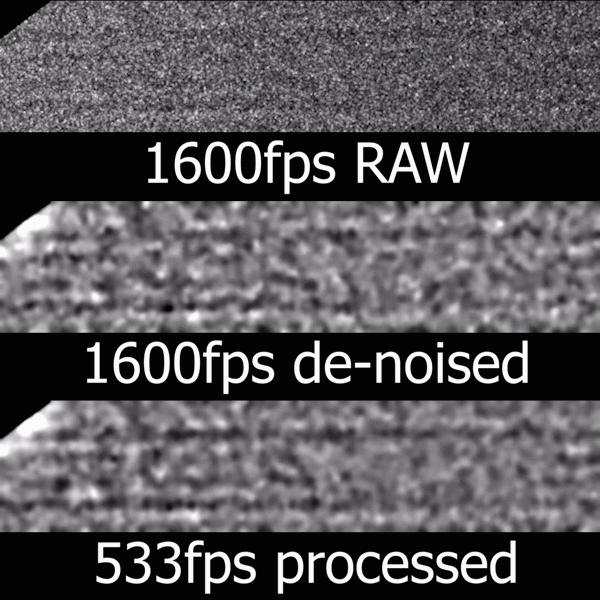The world of atoms and molecules is tricky to study, not just because it’s so small but because events occur so quickly at that scale. Now, researchers at the University of Tokyo have captured slow motion video of the movements of single molecules at 1,600 frames per second (fps).
Normally when talking about viewing tiny objects, a camera’s resolution means “spatial resolution” – that is, how many visual pixels the device can capture. After all, the more pixels, the clearer the image. But “temporal resolution” is just as important. Frames can be thought of like pixels in time, so the more of them that are in a video, the clearer the motion becomes.
Transmission electron microscopy (TEM) allows for great spatial resolution, but by itself doesn’t have very good spatial resolution. Previous studies have managed to capture atomic-scale events at about 16 fps, but that misses a lot of the action when things happen at speeds of hundredths or thousandths of a second.
For the new study, the researchers backed up the high spatial resolution of a TEM with the high temporal resolution of a device called a direct electron detection (DED) camera. That allowed for frame rates as high as 1,600 fps – 100 times greater than previously possible.

Unfortunately, this equipment introduces a major problem – noise. To overcome that, the researchers cleaned up the final video using specialized algorithms.
“To capture high fps, you need an imaging sensor with high sensitivity, and greater sensitivity brings with it a high degree of visual noise,” says Koji Harano, an author of the study. “This is an unavoidable fact of electronic engineering. To compensate for this noise and achieve greater clarity, we used an image-processing technique called Chambolle total variation denoising. You may not realize, but you have probably seen this algorithm in action as it is widely used to improve image quality of web videos.”
The stars of the video are fullerene molecules, which are made up of 60 carbon atoms interlinked in a kind of soccer ball shape – hence their nickname “buckyballs.” The video shows these buckyballs rattling around inside a vibrating carbon nanotube – although to the untrained eye, it may just look like static.
While the technique is useful in seeing new detail at the atomic scale, the team says that the fact that the processing can only be done after the video is shot remains a problem. However, advances in computing power could make it real-time in the near(ish) future.
The study was published in the journal Bulletin of the Chemical Society of Japan.
Source: University of Tokyo




